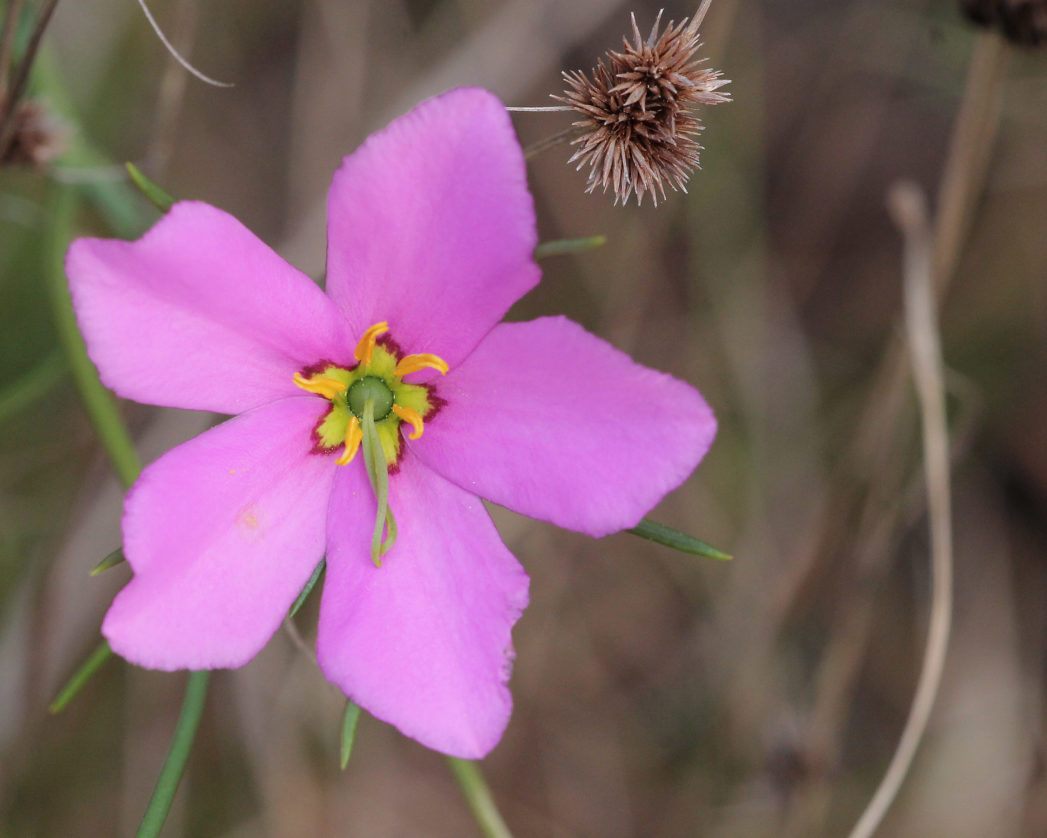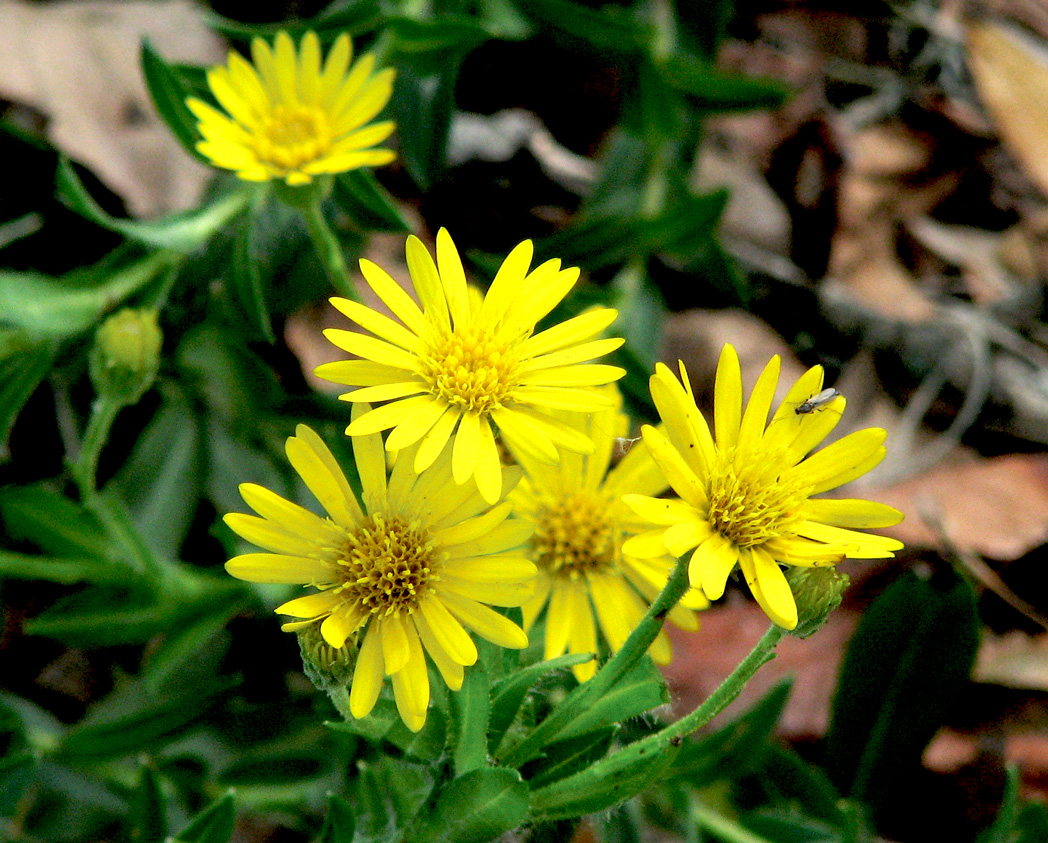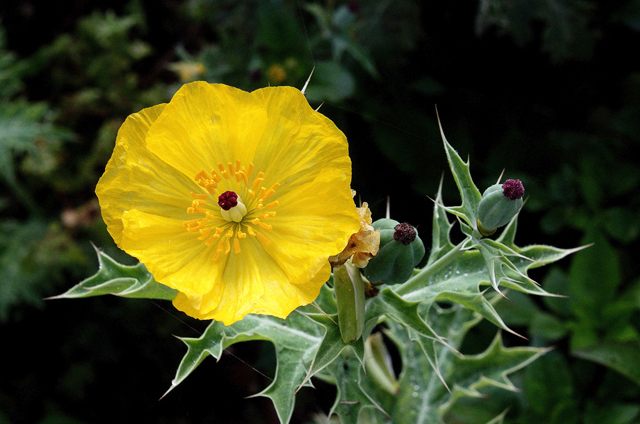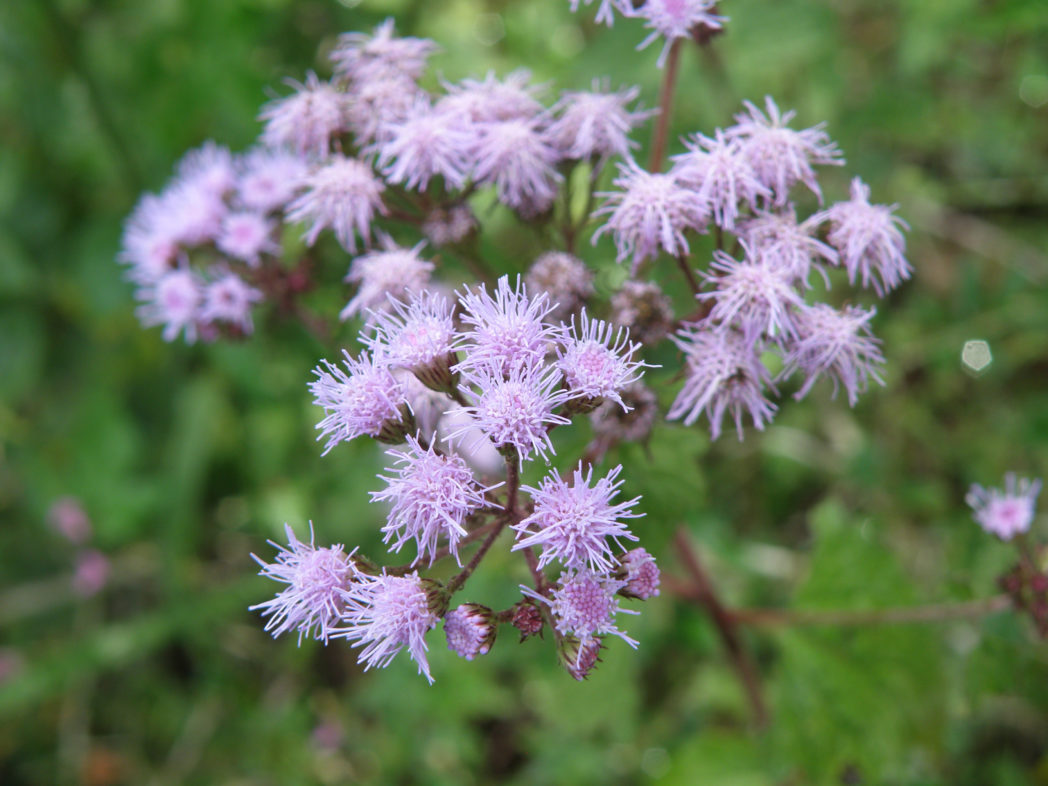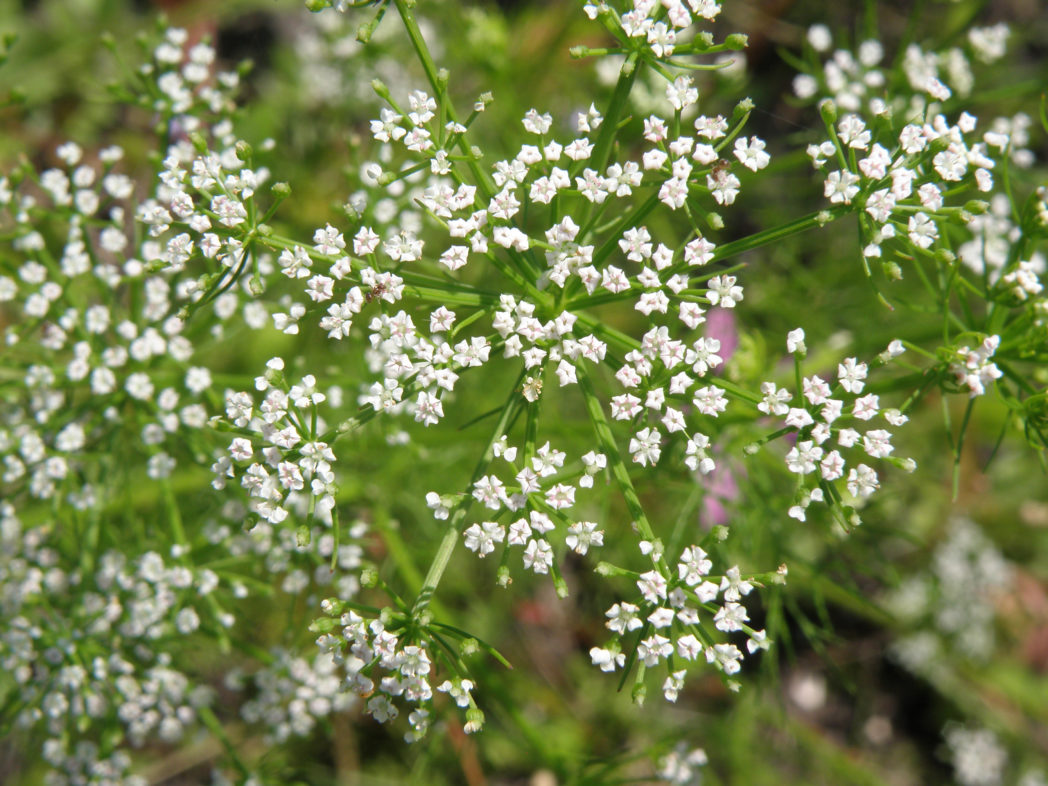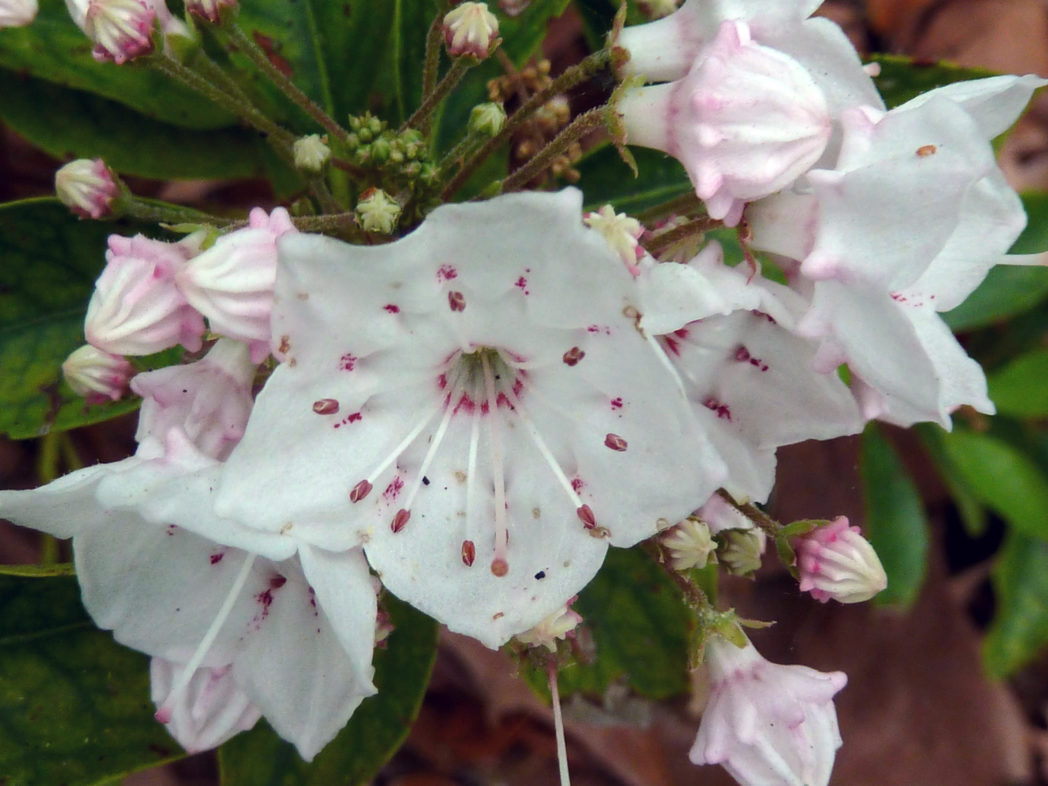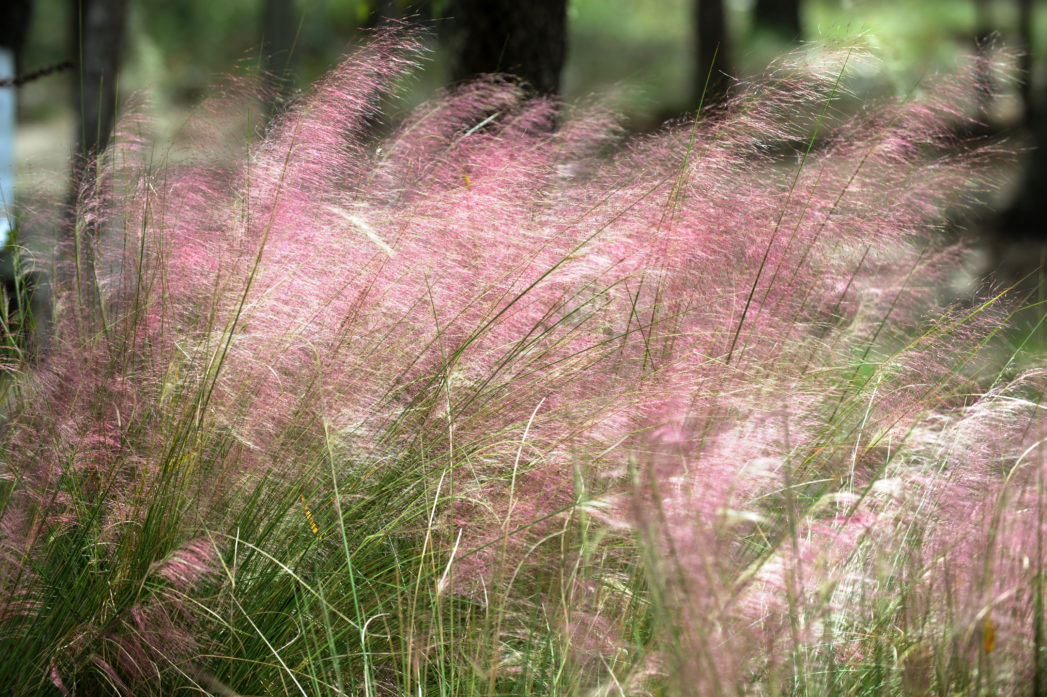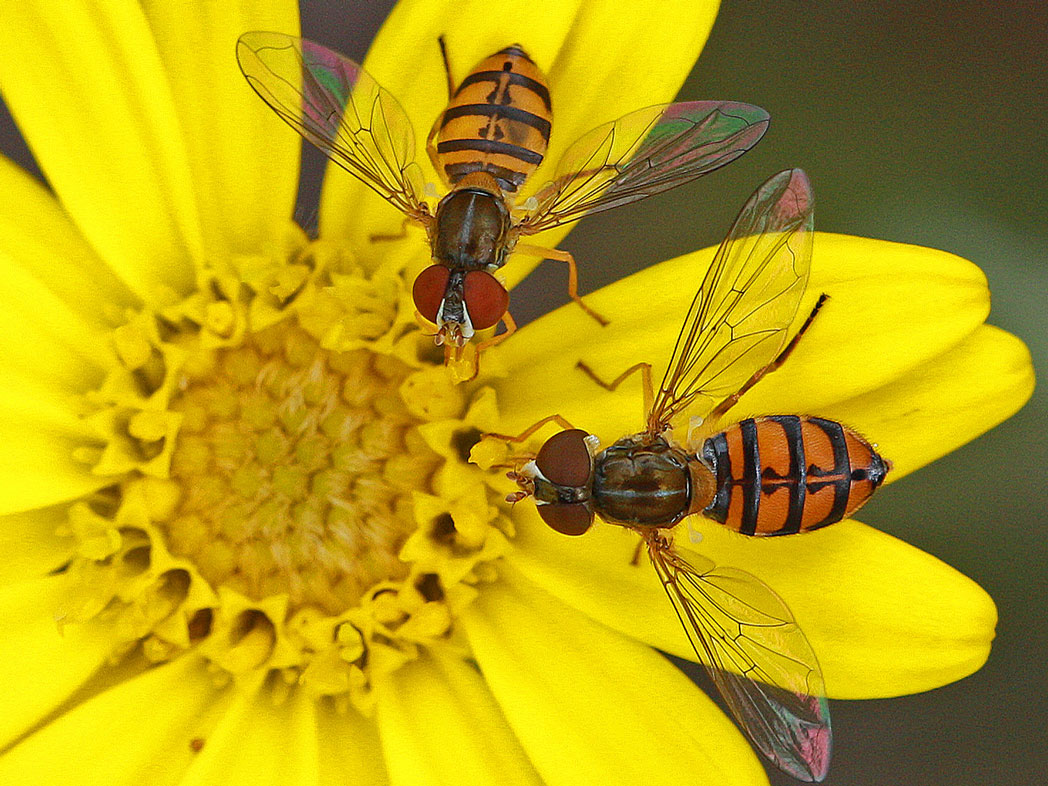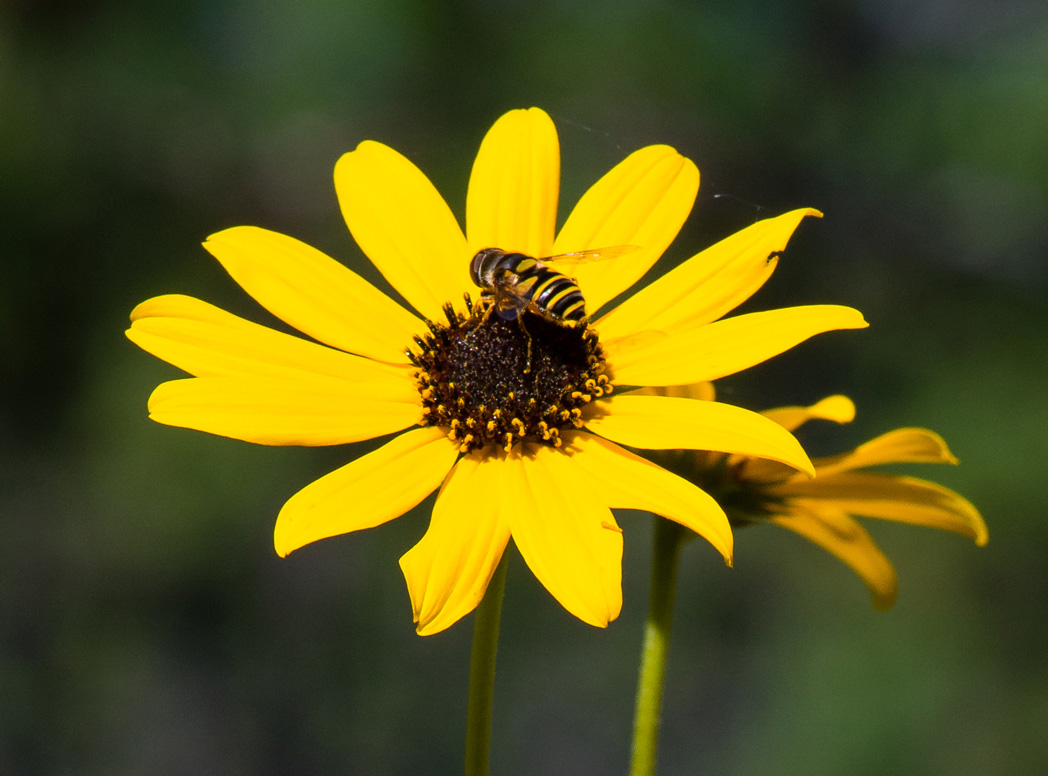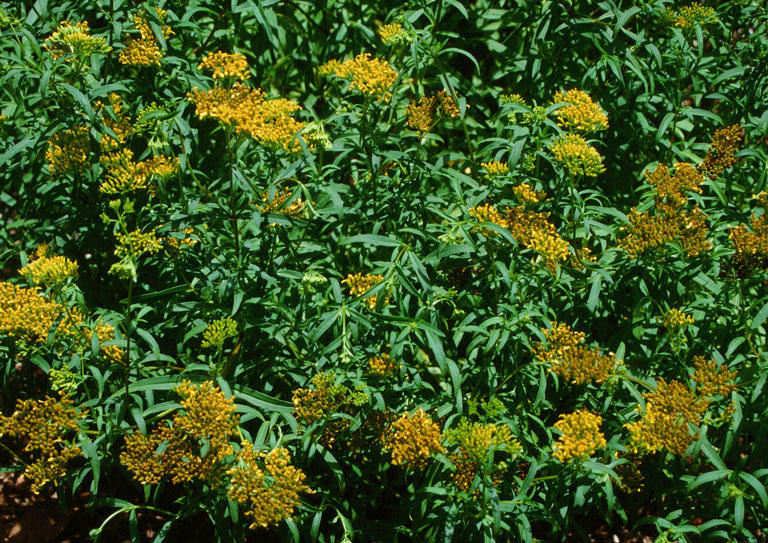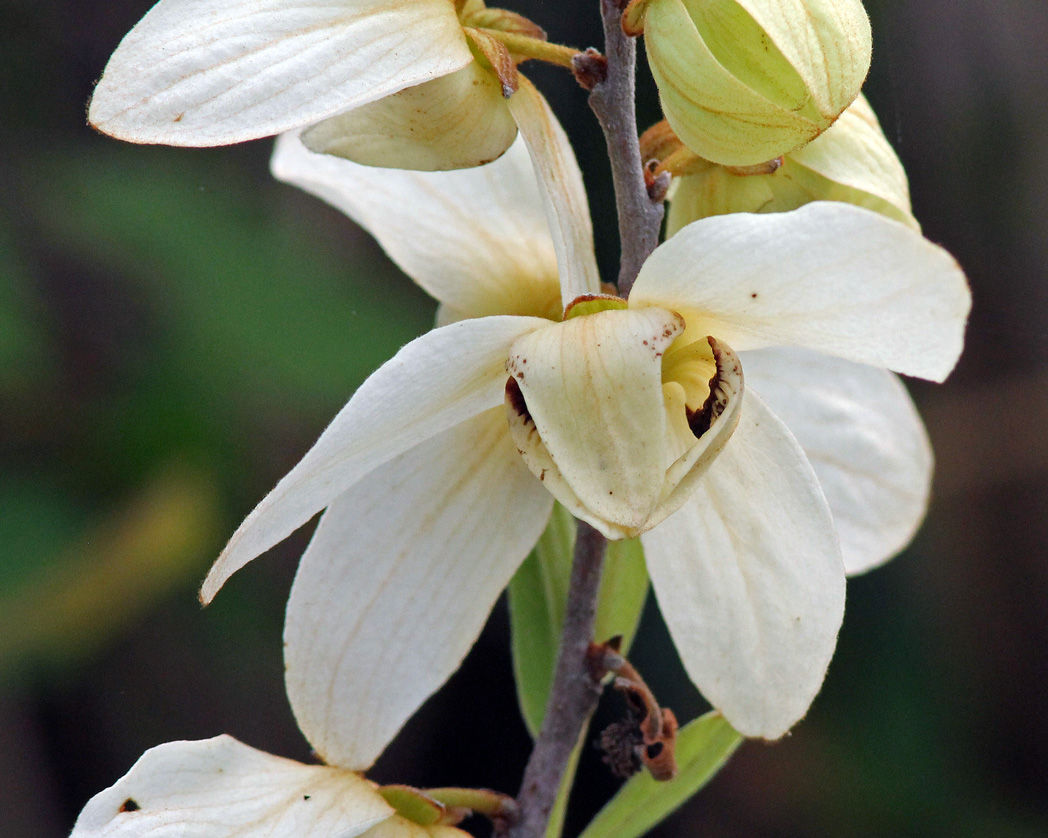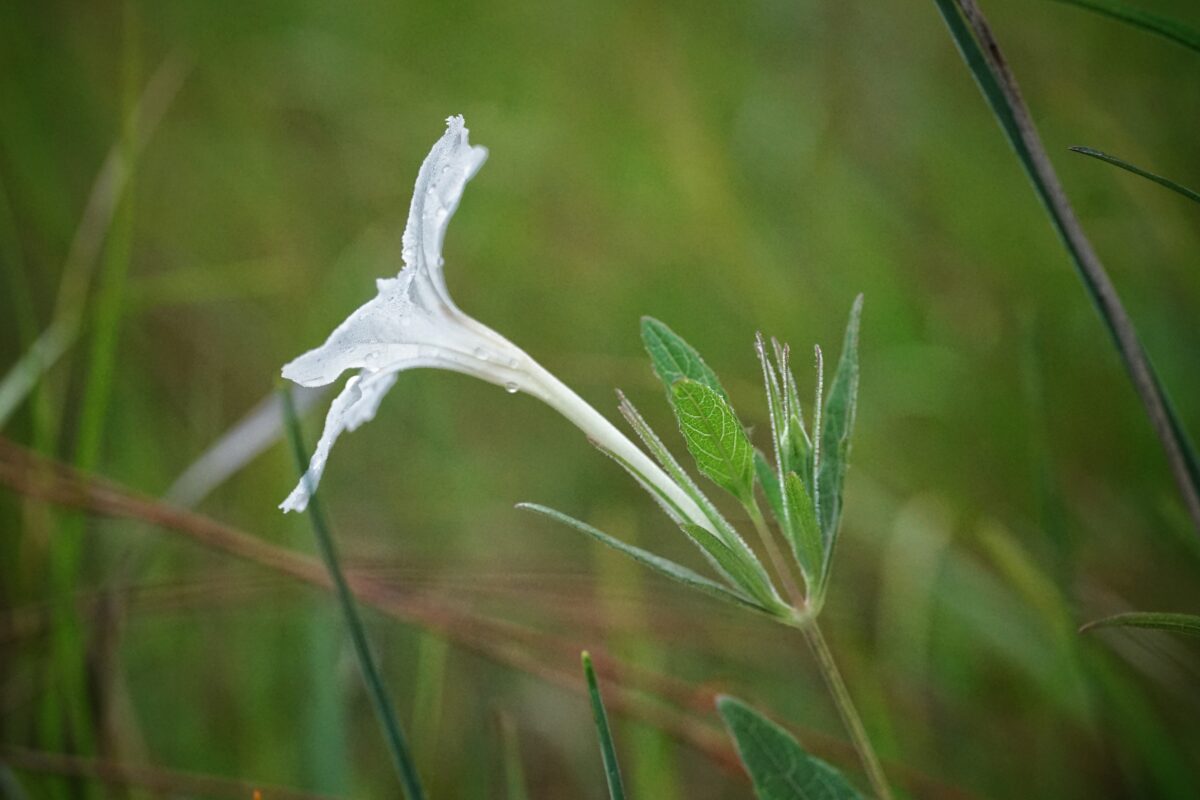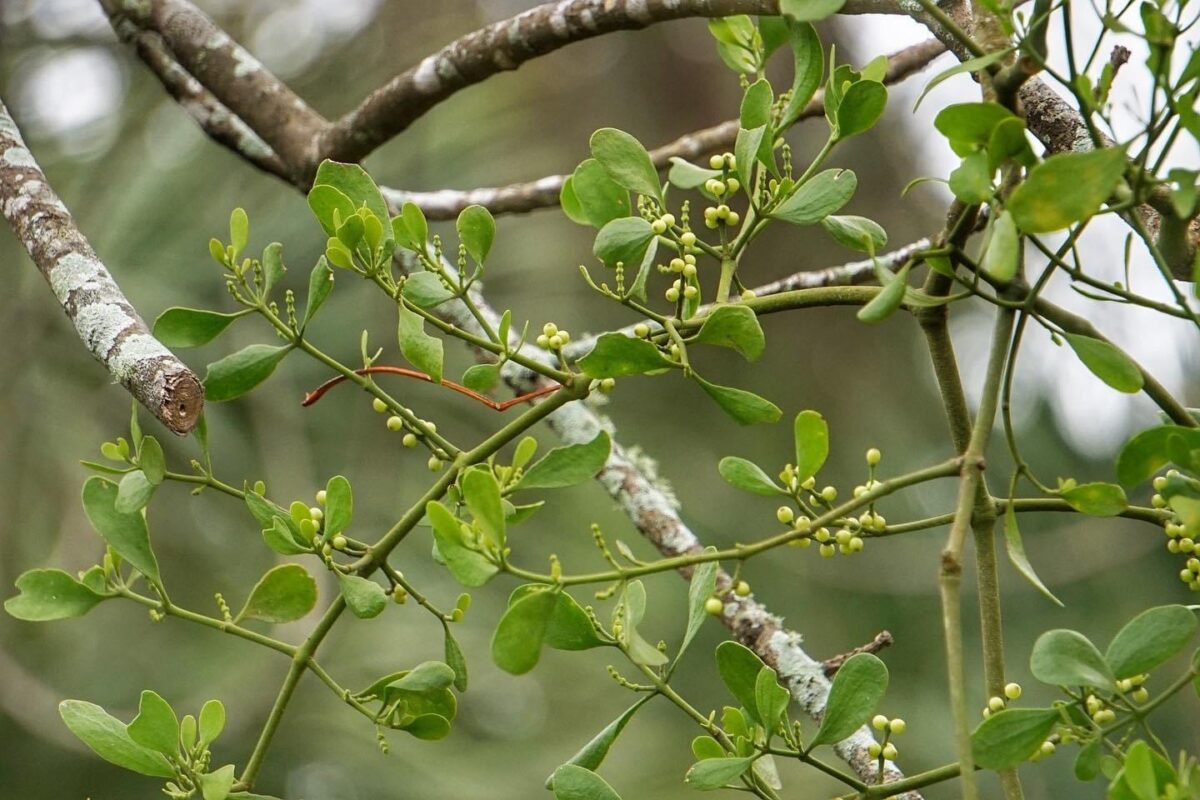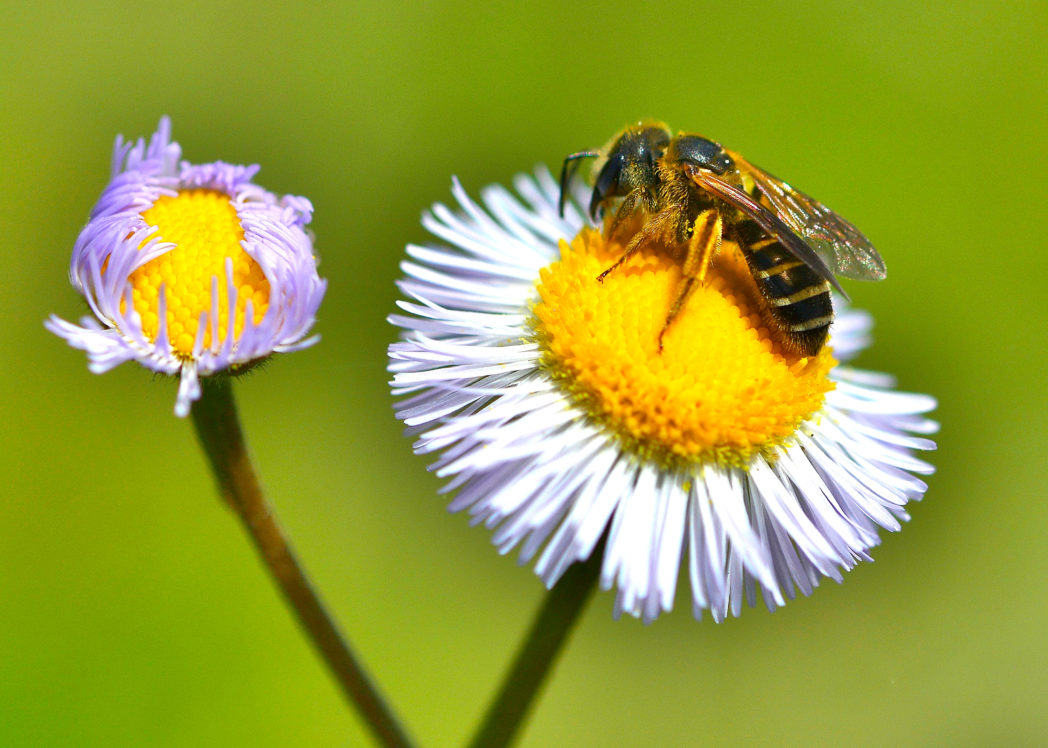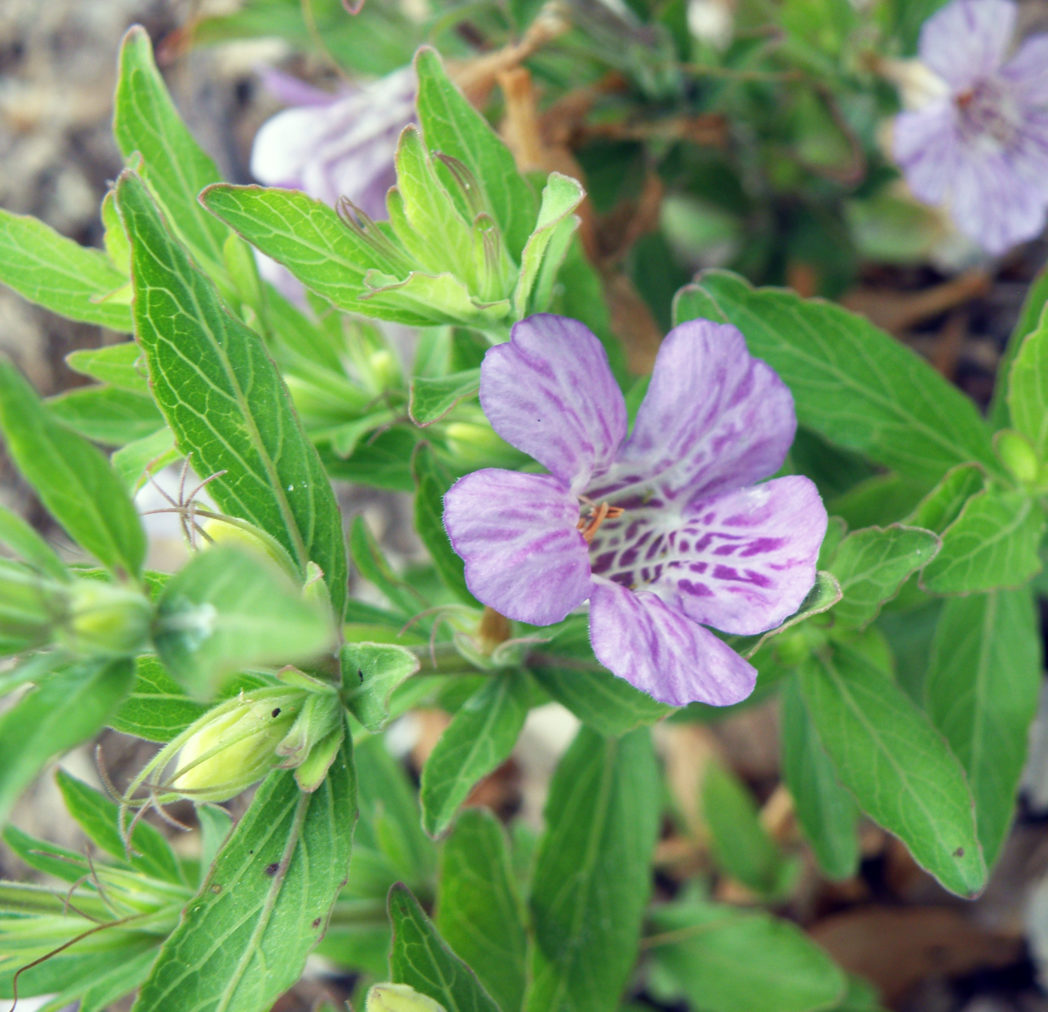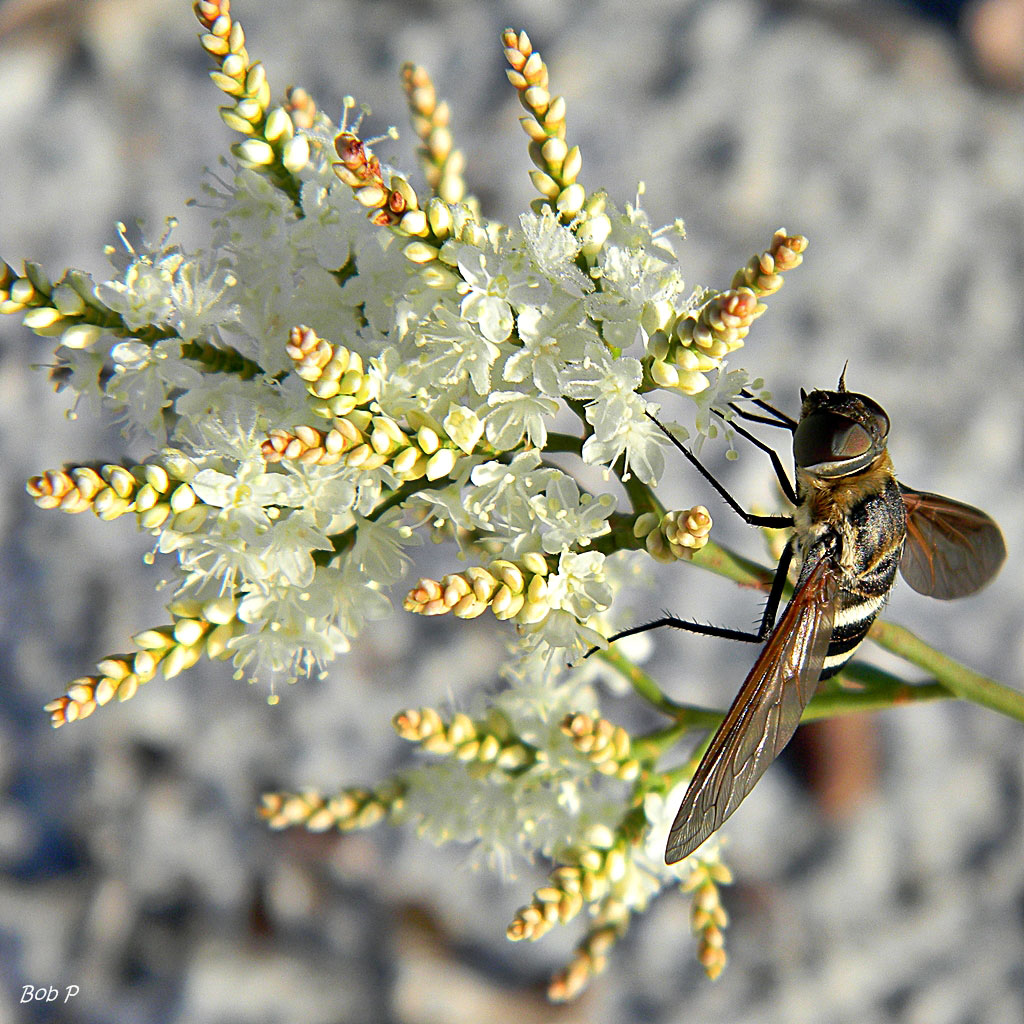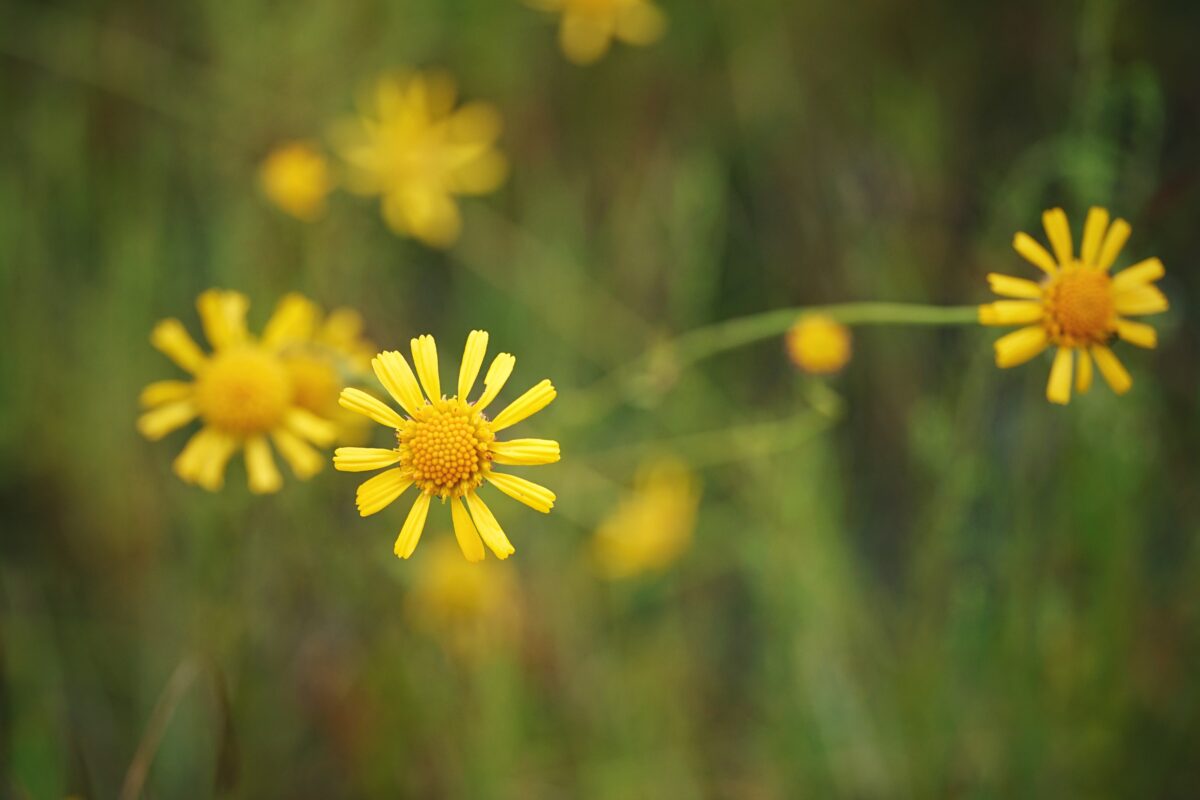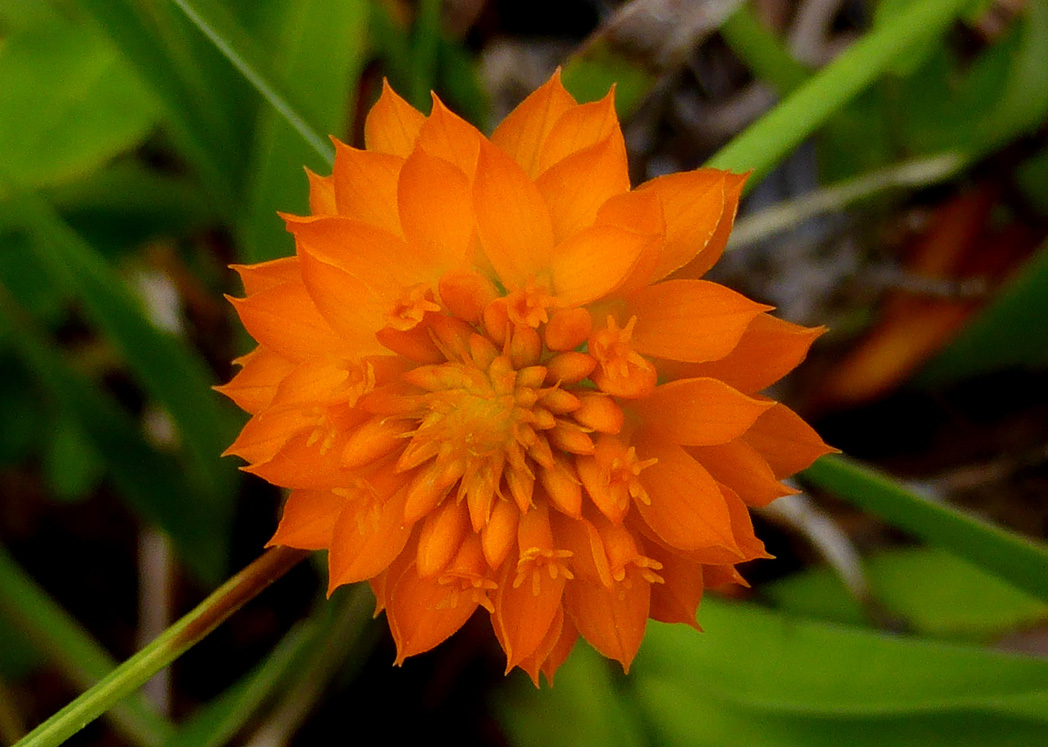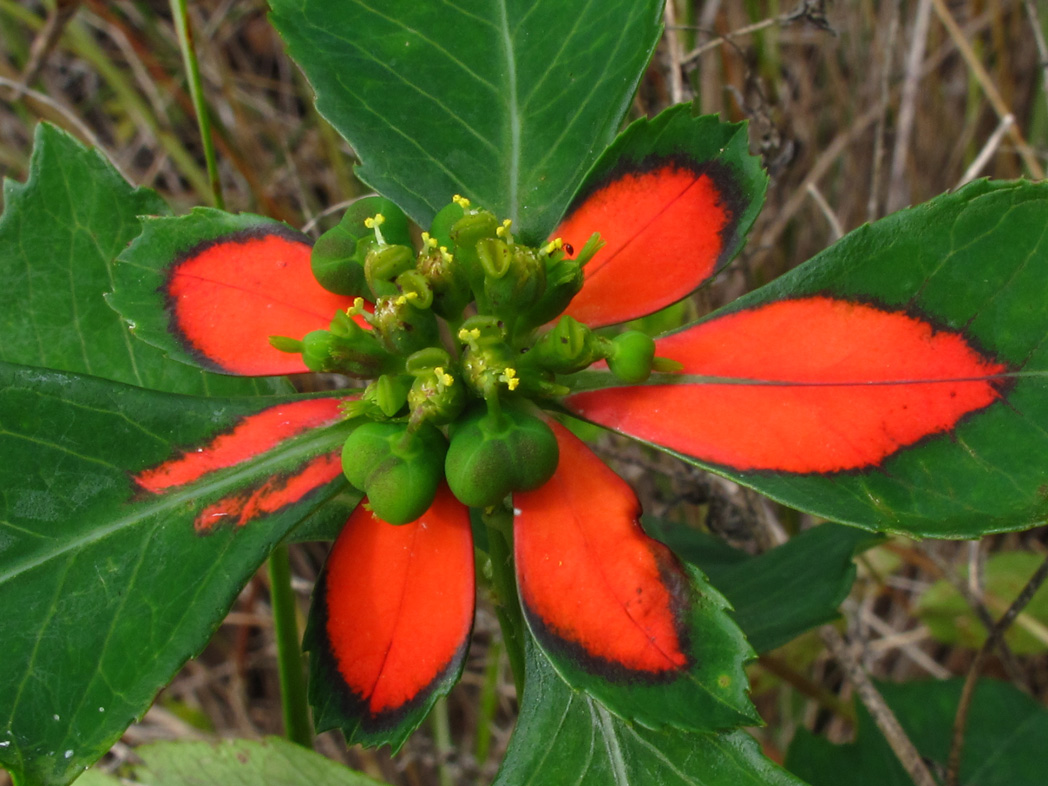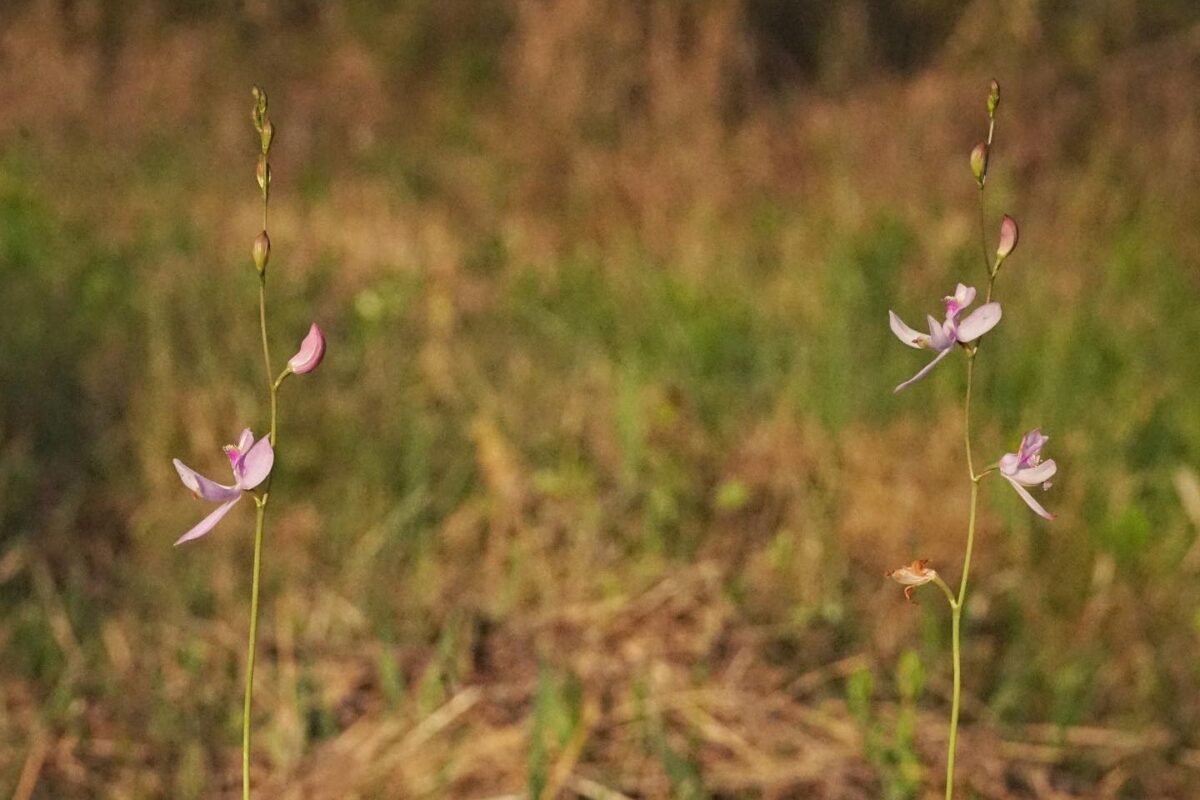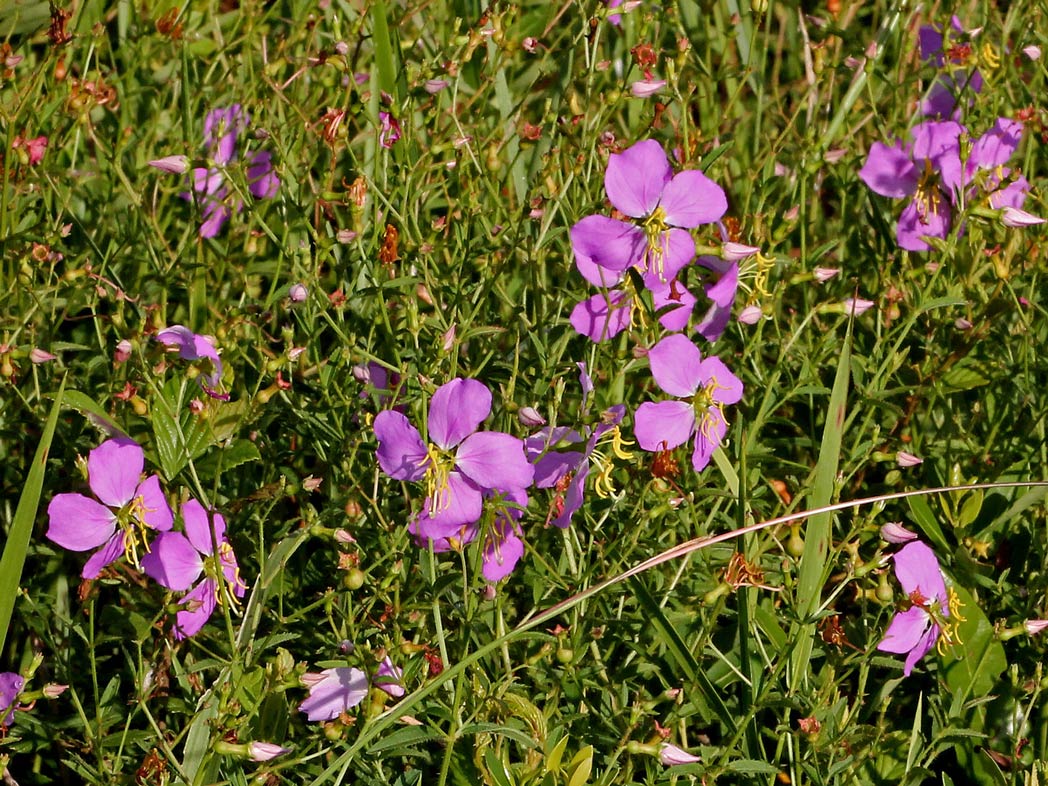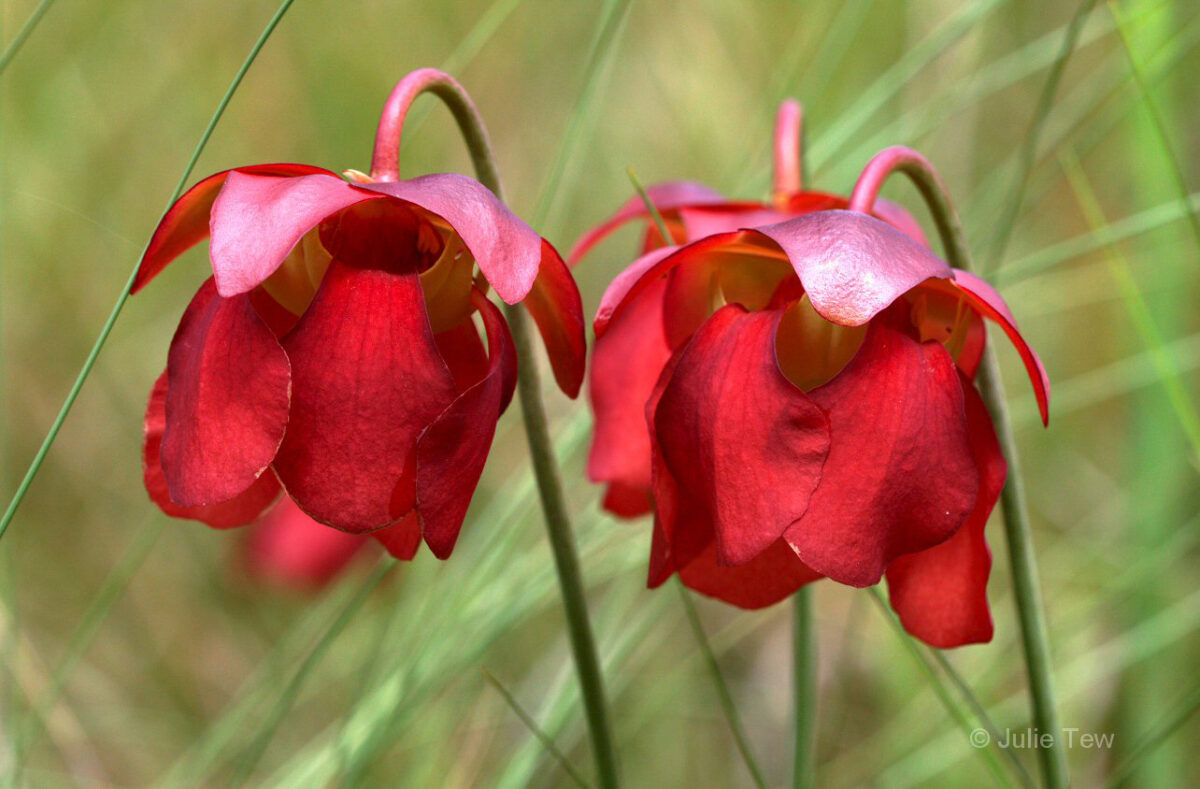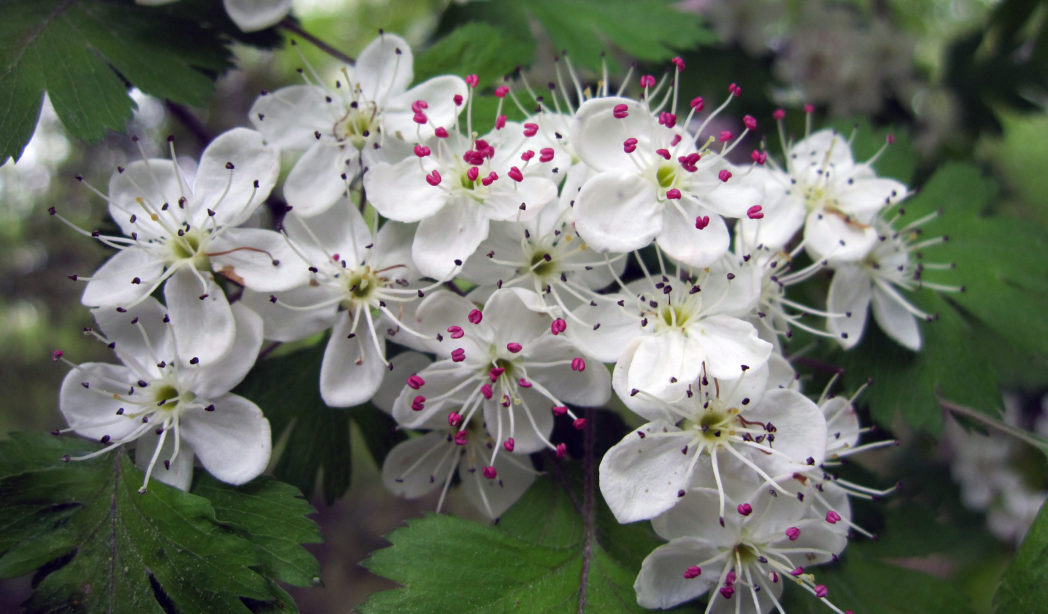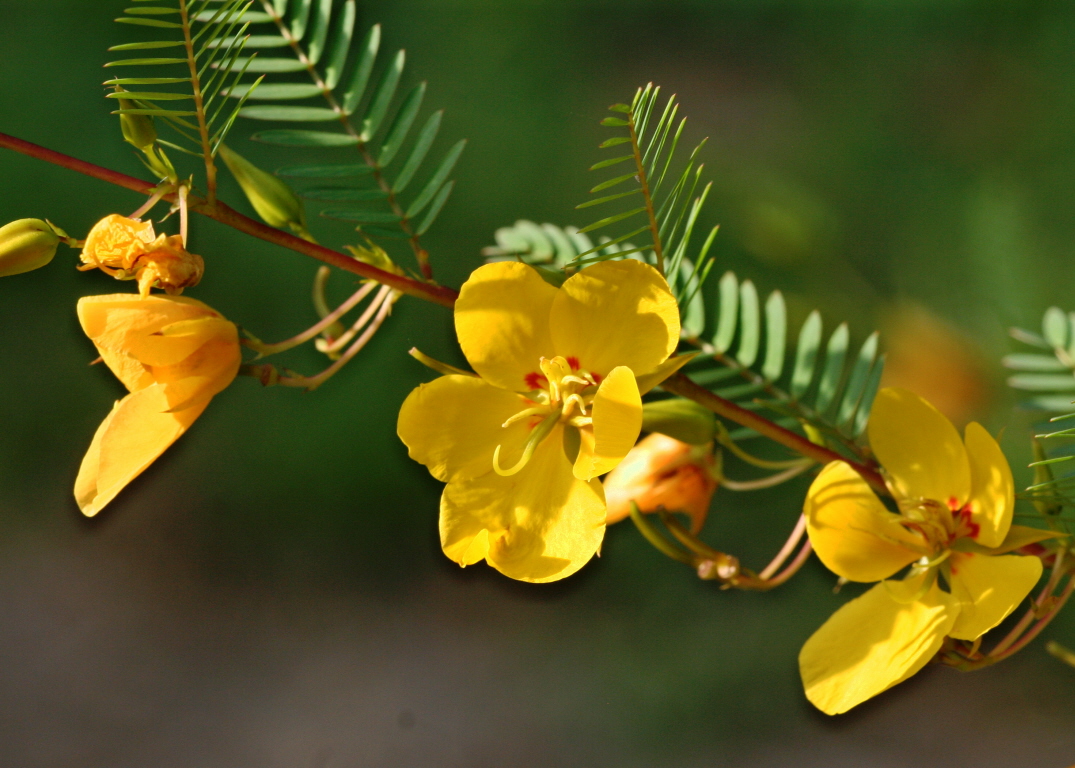Marsh-pink
Marsh-pink (Sabatia grandiflora) is found in mesic pine flatwoods and wet prairies throughout Florida. It is almost endemic, occurring in only one county in Alabama outside of the state of Florida.
Maryland goldenaster
Maryland goldenaster (Chrysopsis mariana) found in pinelands, sandhills and sandy roadsides. Native butterflies, as well as a variety of native long-tongued bees are attracted to the plant’s nectar.
Mexican pricklypoppy
Also known as Yellow pricklypoppy, Mexican pricklypoppy (Argemone mexicana) is an eye-catching wildflower with an imposing presence. Its brilliant blooms are quite attractive, but don’t get too close — the rest of the plant is armed with sharp spines. It blooms winter through summer, typically peaking in early spring and drawing a variety of pollinators. The plant is often spotted in open, disturbed sites and along roadsides throughout much of Florida.
Mistflower
Mistflower (Conoclinium coelestinum) gives the appearance of a blue fog when blooming en masse. Its flowers are very attractive to pollinators, especially butterflies, moths and long-tongued bees.
Mock bishopsweed
Mock bishopsweed (Ptilimnium capillaceum) is a delicate little annual that is too often disregarded as a weed. But despite its small stature, it is both attractive and ecologically beneficial.
Mountain laurel
Mountain laurel (Kalmia latifolia) puts on a spectacular springtime display. Its flowers attract bees and its dense foliage provides cover for birds and small mammals.
Muhlygrass
Nothing says fall in Florida like the purple haze of Hairyawn muhly (Muhlenbergia capillaris) in bloom. When planted en masse, this perennial bunchgrass puts on a spectacular fall display.
Narrowleaf silkgrass
Narrowleaf silkgrass (Pityopsis graminifolia) blooms late summer through early winter in sandhill, flatwoods and scrub habitats throughout the state. It has brilliant yellow flowers and silvery leaves.
Narrowleaf sunflower
Narrowleaf sunflower (Helianthus angustifolius) is one of Florida’s most common sunflowers. In nature, it forms dense colonies, resulting in spectacular swaths of sunshine yellow when in bloom.
Narrowleaf yellowtops
Narrowleaf yellowtops (Flaveria linerias) produces many bright yellow flowers that are attractive to a plethora of butterflies, bees and flower beetles.
Netted pawpaw
Netted pawpaw (Asimina reticulata) blooms late winter through spring, producing many flowers that are pollinated primarily by flies and beetles. It is a larval host for the Zebra swallowtail and Pawpaw sphinx moth.
Nightflowering wild petunia
As the name suggests, Nightflowering wild petunia (Ruellia noctiflora) is a night-blooming wildflower whose flowers open around dusk then shrivel and drop by mid-morning the next day. The bloom’s nectaries are located at the base of a 3″ long flower tube requiring a special pollinator whose tongue is long enough to reach in and take a sip! The pollinators that fit this bill are sphinx moths (family Sphingidae). These nocturnal moths are attracted by the petunia’s large white flowers.
Oak mistletoe
Although it grows year-round, winter is the easiest time to spot Oak mistletoe (Phoradendron leucarpum) as its evergreen leaves stand out amongst the leafless deciduous trees it inhabits. (And yes, this is the very same plant associated with the amorous holiday kissing tradition.)
Oakleaf fleabane
Also known as Southern fleabane and Daisy fleabane, Oakleaf fleabane (Erigeron quercifolius) is a delicate, short-lived perennial wildflower. It typically blooms in spring and summer and attracts a variety of pollinators. It occurs naturally in sandhills and moist hammocks as well as in disturbed sites and along roadsides.
Oblongleaf twinflower
If you are tired of mowing, watering and fertilizing the lawn, consider replacing your turf grass with Oblongleaf twinflower (Dyschoriste oblongifolia), an easy-to-care-for native groundcover.
October flower
October flower (Polygonum polygamum) is a subshrub found in sandhill, scrub and scrubby flatwoods throughout much of Florida. For most of the year, it is a rather understated plant. But in late summer and fall — particularly October — it is covered in a profusion of snowy white blooms. These small but prolific flowers are especially attractive to native bees.
Oneflower honeycombhead
Oneflower honeycombhead is endemic to the SE US coastal plain region and found in wet pine savannahs and flatwoods. Its beautiful yellow flowers attract butterflies and bees and the seedheads provide food for birds
Orange milkwort
Orange milkwort (Polygala lutea) blooms March through November, but can bloom year-round. Its flowers are self-pollinating. Its seeds are spread almost exclusively by ants.
Paintedleaf
With so much attention given to the Christmas poinsettia, we thought it would be nice to pay homage to our native poinsettia, Paintedleaf (Euphorbia cyathorphora).
Pale grasspink
Pale grasspink (Calopogon pallidus) is a terrestrial orchid found in bogs and wet flatwoods, prairies and roadsides. It blooms spring through summer and attracts mainly bees.
Pale meadowbeauty
Pale meadow beauty (Rhexia mariana) is a perennial wildflower with showy pink blooms. It flowers spring through fall and attracts many bees and butterflies.
Parrot pitcherplant
Parrot pitcherplant (Sarracenia psittacina) is a carnivorous perennial plant. It typically flowers in April and May and occurs naturally in seepage slopes, wet prairies, depression marshes, dome swamps, and bogs.
Parsley haw
Parsley haw (Crataegus marshallii) is an important source of nectar for a variety of pollinators and is a larval food source for many butterfly and moth species.
Partridge pea
Partridge pea (Chamaecrista fasciculata) is a larval host for several butterflies, including the Gray hairstreak and Cloudless sulphur. The plant is also used by bees, ants, flies, wasps, birds and other wildlife.

